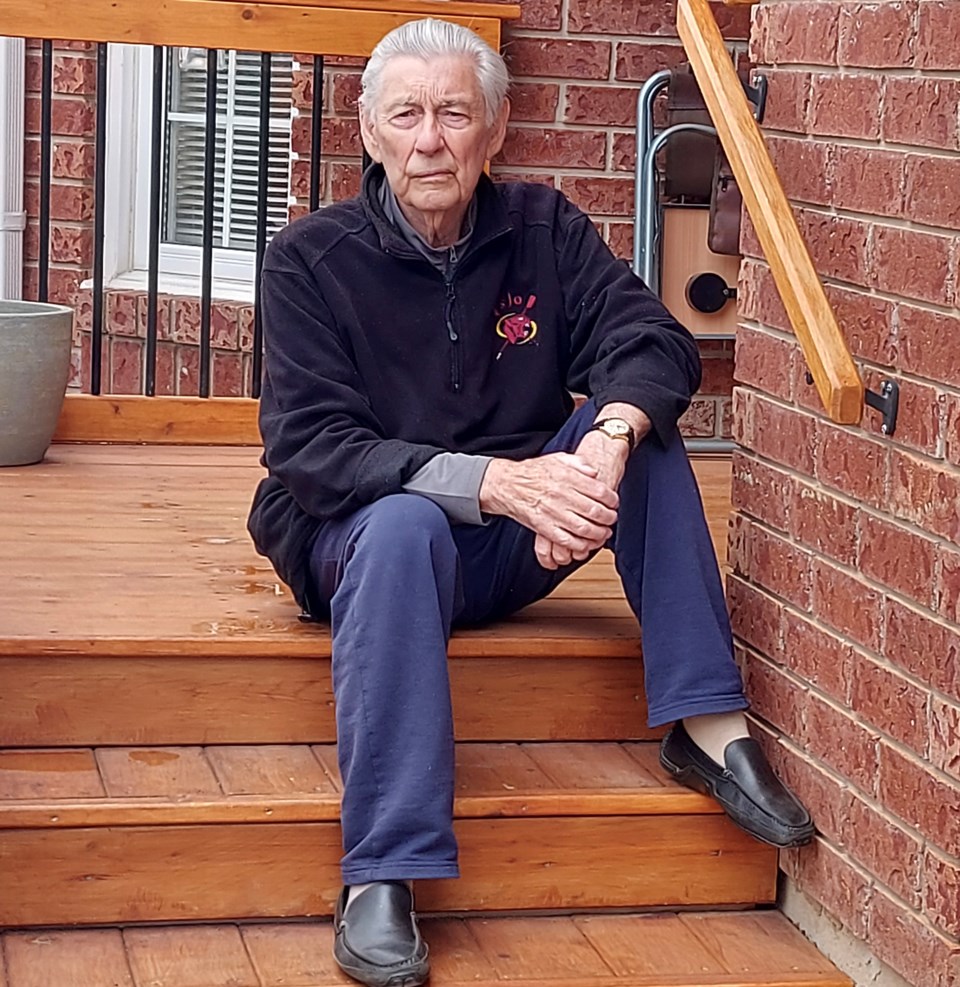Being a less welcoming city might make Wilkins Beach a little less awash with people and vehicles, says area resident Barrie Robinson.
“Sad though it may be, we should be visitor unfriendly,” said the 87-year-old Taylor Drive resident. "But then we get into the almighty dollar syndrome and howls from the commercial people, who usually are non-residents.
“Wilkins Beach used to be a place of attraction and devoid of litter,” he said. “Because of the huge visitor-friendly area developed on the (Kempenfelt) bay, we now suffer from the spillover.”
City council passed a motion April 12 that staff work with the Lake Simcoe Region Conservation Authority to design, permit and implement ecological restoration plans for the lake and creek shorelines at Wilkins Park beach. Also that the Wilkins Park construction plan keep the sandy area of the park available for public use as much as possible between June 15 and Sept. 15, 2021.
There will be signs noting that vehicles not displaying resident waterfront passes or the friends and family waterfront passes may be towed at the owner's expense, installed at Wilkins Park and adjacent spillover area, at a cost of approximately $3,200 to be charged against the ‘Operations/COVID-19 expense account’ and that the tow away zones would apply from June 15 to Sept. 15, from 9 a.m. until 9 p.m.
Signs for the summer of 2021 would be for a pilot program, with staff monitoring. But no towing shall take place, and for those vehicles that are not displaying a resident waterfront pass or a friends and family waterfront pass, a warning notice would be left along with the parking ticket on the vehicle.
This is where the plan falls down, Robinson said.
“Not a bad scheme, but there must be an aggressive towing-away of vehicles, so much so that a reputation is created,” he said. “(The) problem is that the public is stupid and has to be treated like sheep.”
Centennial Park, with its long, sandy beach and large children’s playground, attracts tourists and visitors alike. Buy when it’s full, or there are no parking spots left, people go looking for other waterfront parks — Minet’s Point, Tyndale and Wilkins.
“So we get tons of tourists and then there is reaction because these spill over to the previously quiet areas enjoyed by local residents,” Robinson said. “Isn’t there a mumble ‘build it and they will come’?”
Council took other steps to control traffic near Wilkins Park and help area residents.
Should public health restrictions allow it, staff would administer a visitor waterfront parking passes pilot program for 2021 at the Wilkins, Dock Road, Tyndale Park, Minet’s Point, Johnson’s Beach and Centennial Beach waterfront areas.
Each household is entitled to five free passes, to be picked up from Service Barrie upon proof of residency or mailed out upon request.
The pass is only available to residential addresses where the waterfront spillover parking restrictions are currently in place in the Wilkins and Dock Road waterfront areas.
Each pass will be valid for one day and can be used from June 15 to Sept. 15, 2021, at which point the program expires. The cost of producing the permits would be funded from the parking reserve, with a limit of $5,000.
City staff would also work with Scales Nature Park to preserve the turtle hatching area at Wilkins Park, a program named ‘Save the Turtles’.
Dave Friary, the city’s director of operations, has said the ecological restoration plans for lake and creek shorelines at Wilkins Park beach will not affect the trail or Wilkins Park and gazebo on the top of the hill. Permanent fences would be installed along Hewitt’s Creek at vulnerable access points, and from the bridge over the creek to the pump station.
“Part of the direction was that we keep access open as much as possible,” Friary said. “Obviously, when we are on site working, we would close the area as it would be considered a construction site.
“We need to have a permit from the conservation authority, which could take a few weeks, then we can determine a schedule for the work as it may be restricted due to wildlife, planting seasons, etc.," he added.
Wilkins Park and its beach are located within the regulated limit of the Lake Simcoe Region Conservation Area and zoned environmental protection (EP), due to the sensitive nature of the area, and zoning compliance is required. The EP zone permits these uses: ecological management measures, environmental conservation, lookout points, naturalized buffer, natural restoration, trails and other similar uses where there are minimal impacts on the environmental features and functions.
The other city beaches are zoned open space, which is not as restrictive as the EP zone and permits active uses as well as playing fields, courts, parks, playgrounds and other structures.
It is the EP zoning that is requiring the city to de-list Wilkins as a beach, according to city staff, and restore Wilkins Park to allow it to regenerate to its natural state during a period of time.
Staff also say this zoning conformity is not tied to COVID-related overuse in the summer of 2020, however it did bring the zoning issue to a head.
The Wilkins Park shoreline contains a smaller beach along Kempenfelt Bay, located at the southeast end of Barrie’s waterfront, near the bottom of Crimson Ridge Road. It contains the end of Hewitt’s Creek, a designated cold-water fishery which empties into the bay.
The shoreline and creek area were environmentally damaged by increased human use in the summer of 2020, as part of a significant increase in the city’s waterfront use due to changes in people’s outdoor activities, in response to the COVID-19 pandemic and provincial and local health regulations and restrictions.



